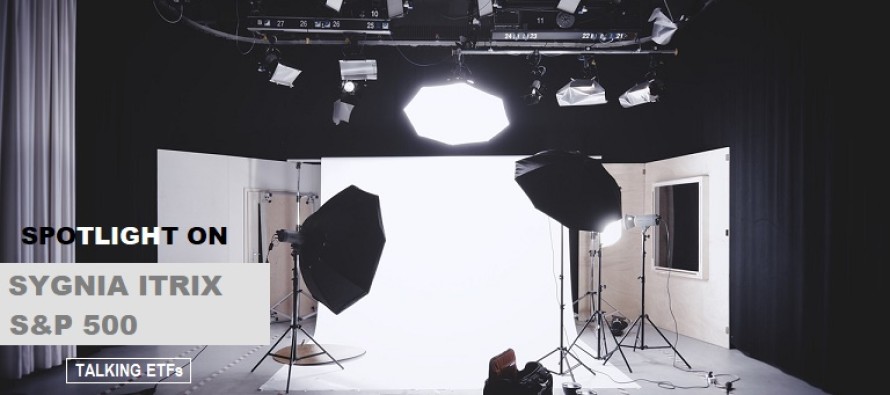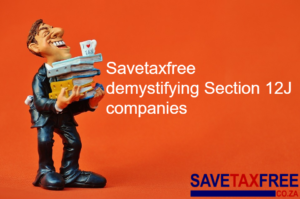ETF Review: Spotlight on the Sygnia Itrix S&P 500

Related Articles
Intellidex | 29 November 2017
Every week Intellidex reviews an ETF fund for EasyEquities. See previous reviews we’ve done here.
Sygnia introduced four new ETFs to the JSE at the end of last month: Itrix S&P 500; Itrix Global Property ETF; Itrix SWIX 40 ETF; and Sygnia Itrix Top 40 ETF. These complement its range of five international ETFs that it took over from Deutsche Bank earlier this year. This week we look at Sygnia Itrix S&P 500.
While Sygnia is a newcomer to the ETF market, it is not new to index-tracking products – it has been offering passively-managed unit trusts for some time. Index-tracking unit trusts are similar to ETFs except they are not listed, so cannot be as easily traded. They also tend to have higher fees.
The Sygnia Itrix S&P 500 ETF brings the number of ETFs offering exposure to the US stock market to three. Its fees are slightly cheaper but not by much. Given the group’s previous criticism of the fees of locally listed ETFs, we were expecting its new products to come in at significantly lower cost.
The S&P 500 is the oldest and one of the most recognised indices in the world. It provides exposure to the biggest 500 companies listed on the New York Stock Exchange. In terms of risk and returns, the index is not materially different from the MSCI USA, which is tracked by another of Sygnia’s offerings, the Itrix MSCI US. The MSCI index is slightly broader, holding 617 constituents. It covers about 85% of the free-float adjusted market capitalisation in the US, slightly more than the 80% covered by the S&P 500.
Suitability: This ETF is ideal for long-term investors with above-average risk tolerance. Given that all the underlying stocks will be denominated in dollars, it can also be used by investors who just want to hedge their investments against a weakening rand.
What it does: The fund tracks the price and yield performance of the S&P 500 index by holding a portfolio of securities that match the index it tracks. Because the index is weighted by market capitalisation, higher-value companies take up bigger weightings and lower-value companies take up smaller positions.
Top holdings: The S&P 500 is well diversified: the top-10 holdings make up less than a quarter of the overall portfolio with the biggest asset, Apple, constituting 3.87%. However, the index does have a bias towards technology companies, which account for 23% of the fund.
Risk: This is a 100% investment in equities, which is a riskier asset class than bonds or cash, but the returns over time should compensate for volatility. An investment in this ETF should therefore form part of a more diversified portfolio.
Advantage: Although invested offshore, this and other global ETFs are considered local assets, which means investing in them will not affect your offshore asset allocation limit of R10m per year.
Fees: Itrix S&P 500 is expected to have a total expense ratio of 0.20%, making it the cheapest in the segment.
Historical performance: Since the other ETFs that track the S&P 500 index are also relatively new, we have used the Sygnia MSCI USA as a proxy for this ETF. The rand-denominated MSCI index has delivered strong returns over the past five years, largely unmatched by local funds.
Fundamental View: This fund derives its returns from two sources: the performance of US equities and the rand/dollar exchange rate. By investing in this ETF, you are investing in the underlying portfolio of equities and the dollar. Your ultimate return will be influenced by the movement of the rand against the dollar as well as the share price movements of the underlying companies. Before the recent rally in US stock markets, the exchange rate was the major contributor to growth.
While not robust, the US economic outlook is healthy, with GDP expected to come in this year at 1.8%. The stock markets in the US have been rallying since the election of Donald Trump as president late last year. Trump has promised major spending on the nation’s roads, bridges, airports and railways, and is trying to push through tax reforms that will offer deep cuts in tax rates for individuals and corporations. If the tax reforms are passed, US companies are likely to continue doing well.
Alternatives: As an alternative to this ETF, you may consider the CoreShares S&P 500, Sygnia Itrix MSCI USA and Satrix S&P 500.
BACKGROUND: Exchange-traded funds (ETFs)
Exchange Traded Funds (ETFs) are passively managed investment funds that track the performance of a basket of pre-determined assets (in this case, US companies). They are traded the same way as shares and the main difference is that whereas one share gives exposure to one company, an ETF gives exposure to more than one company in a single transaction. ETFs can be traded through your broker the same way as shares, say, on the EasyEquities platform. In addition, it qualifies for the tax-free savings account, where both capital and income gains accumulate tax free.
Benefits of ETFs
- Gain instant exposure to various underlying shares in one transaction
- They diversify risk because a single ETF holds various shares
- They are cost-effective
- They are liquid – it is usually easy to find a buyer or seller and they trade just like shares
- High transparency through daily published index constituents
Disclaimer
This research report was issued by . Intellidex aims to deliver impartial and objective assessments of securities, companies or other subjects. This document is issued for information purposes only and is not an offer to purchase or sell investments or related financial instruments. Individuals should undertake their own analysis and/or seek professional advice based on their specific needs before purchasing or selling investments. The information contained in this report is based on sources that Intellidex believes to be reliable, but Intellidex makes no representations or warranties regarding the completeness, accuracy or reliability of any information, facts, estimates, forecasts or opinions contained in this document. The information, opinions, estimates, assumptions, target prices and forecasts could change at any time without prior notice. Intellidex is under no obligation to inform any recipient of this document of any such changes. Intellidex, its directors, officers, staff, agents or associates shall have no liability for any loss or damage of any nature arising from the use of this document.
Remuneration
The opinions or recommendations contained in this report represent the true views of the analyst(s) responsible for preparing the report. The analyst’s remuneration is not affected by the opinions or recommendations contained in this report, although his/her remuneration may be affected by the overall quality of their research, feedback from clients and the financial performance of . Intellidex staff may hold positions in financial instruments or derivatives thereof which are discussed in this document. Trades by staff are subject to Intellidex’s code of conduct which can be obtained by emailing [email protected]. Intellidex may also have, or be seeking to have, a consulting or other professional relationship with the companies mentioned in this report.
✖






